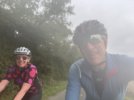The_Bowlii
Well-Known Member
- Relationship to Diabetes
- Type 1
Hello there - starting my first ever thread.
I was diagnosed with Type 1 diabetes about a month ago. My biggest concern was getting back to exercise as I’m a keen cyclist and squash player. I have to admit I thought it was the end of all that and have been very upset with what seems to be so unfair.
Roll on a month, I’ve met the dietician and talked to a friend of a friend with T1D and it all looks manageable! I’ve played squash 3 times in the past week and done 25 miles on the bike. I’ve gone low on BG once after squash and during my bike ride had to consume a couple of gels after 45 mins and 1h30.
There are so many things to consider including starting BG, recent food, duration, intensity, insulin dosage etc. I’m just doing it by trial and error right now to set a baseline and then make changes to each of the variables to measure the impact. Luckily, I’ve got my lovely wife along for the ride…
If you’re reading this and you have words of wisdom or even any questions, please feel free to respond.
Happy exercise, whatever your game!
I was diagnosed with Type 1 diabetes about a month ago. My biggest concern was getting back to exercise as I’m a keen cyclist and squash player. I have to admit I thought it was the end of all that and have been very upset with what seems to be so unfair.
Roll on a month, I’ve met the dietician and talked to a friend of a friend with T1D and it all looks manageable! I’ve played squash 3 times in the past week and done 25 miles on the bike. I’ve gone low on BG once after squash and during my bike ride had to consume a couple of gels after 45 mins and 1h30.
There are so many things to consider including starting BG, recent food, duration, intensity, insulin dosage etc. I’m just doing it by trial and error right now to set a baseline and then make changes to each of the variables to measure the impact. Luckily, I’ve got my lovely wife along for the ride…
If you’re reading this and you have words of wisdom or even any questions, please feel free to respond.
Happy exercise, whatever your game!


